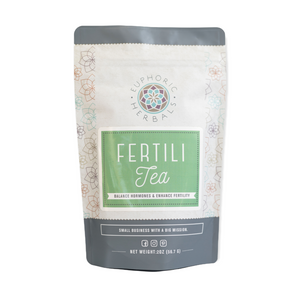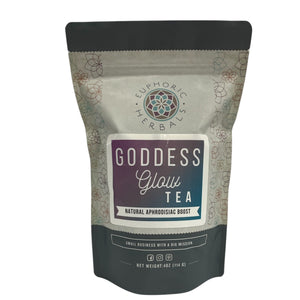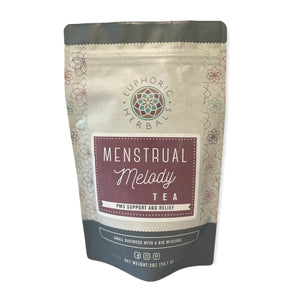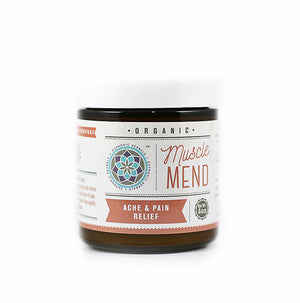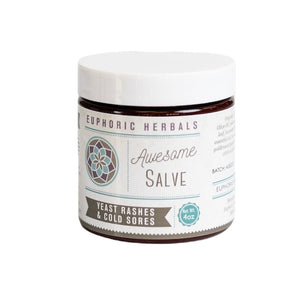Feverfew is a medicinal herb with uses that go back at least to 60 AD and possibly longer. It has a rich history of use in many ancient traditions and has sparked modern research studies because of its potential to help with migraines.
Besides being used as a headache remedy, feverfew has also been utilized for fevers (of course), insect bites, labor, fertility, stomach ache, and allergies. Much of its beneficial effect is thought to come from powerful compounds in the plant like parthenolide and tanetin.
Here's more about feverfew, it's top benefits and uses, and any precautions you should know about (plus, how to make feverfew tea).
What Is Feverfew?
Feverfew (Tanacetum parthenium) belongs to the daisy family, formally known as the Asteraceae family. It's originally native to the Balkan Mountains area of Europe but has become naturalized in other areas of Europe as well as North and South America.
The plants bloom with very daisy-like flowers that have white petals and yellow centers. Leaves are a yellowish green and strongly scented.
Because of its friendly appearance, feverfew can be grown as an ornamental plant as well as a medicinal one. It's a perennial, which means it comes back in the garden each year, and makes an excellent addition to an herb garden.
All the aerial parts of feverfew (leaves, stems, and flowers) can be used for health purposes. Often, they are dried, cut, and sifted together into a single mix.
Top Benefits and Uses for Feverfew
Easing Fevers

One of feverfew's uses during sickness is apparent in its name. Reducing fevers is one of the most traditional uses for this herb, although it's not as often used for this purpose today.
Most fever-relieving herbs work as diaphoretics. This means they induce sweating to help your body rid itself of pathogens that are instigating the fever and help you to "sweat it out".
Feverfew also likely helps with fevers by reducing inflammation, since it has anti-inflammatory properties.(1)
Today, herbalists are more likely to use herbs like yarrow, elderflower, catnip, and peppermint for fever relief, although if you have feverfew on hand, it can still be useful for this purpose.
Relief for Headaches and Migraines
One of the most studied feverfew uses is its potential to relieve headaches, specifically migraines. In fact, feverfew is one of several common headache remedies that have been used for years.
Research so far indicates that feverfew may be effective for migraines because of parthenolide and other plant compounds.
Parthenolide appears to help stop the production of prostaglandins, which are inflammation-promoting molecules. It may also work to stop blood vessels from widening and stop smooth muscle spasms- both of which can contribute to migraines. (2)(3)
In clinical studies, feverfew has shown benefits for both reducing and preventing migraines. It doesn't work for every single person, but the overall outcomes have been mostly positive. Even better, the studies found no major safety concerns associated with taking feverfew. (4)(5)
(You can try it in this Head Soother extract.)
May Help Rheumatoid Arthritis
Because of its anti-inflammatory properties, feverfew has shown the potential to help with symptoms of rheumatoid arthritis, although more research is needed to determine its effectiveness.
One study found that parthenolide, one of the compounds in feverfew, was able to lessen the severity of joint destruction in an animal model. The researchers concluded that it may therefore be therapeutic for arthritis. (6)
This holds true to the longstanding use of feverfew as an herb for pain and inflammation of varying kinds (including toothaches, stomach pain, and arthritis).
Skin Relief

Another more recent use of feverfew is to soothe dermatitis, rosacea, and other itchy, swollen skin conditions. Once again, it's the anti-inflammatory properties of this herb that are most likely responsible for this benefit. (7)
Interestingly, in the case of skin relief, parthenolide is usually removed before the feverfew extract is made into a cream. Even though parthenolide has many benefits, it can act as a skin irritant, especially upon repeated exposure.
Menstrual Relief
Because feverfew can calm inflammation and inhibit prostaglandin, it also has benefits for relieving menstrual cramps. This is because cramps occur when your uterus releases too much prostaglandin (a hormone that can cause pain and inflammation).
Research is also revealing that feverfew may have unexpected mood-lifting effects. No human studies have been done yet, but it has shown anti-anxiety and anti-depressant effects on animals. (8)
This could make feverfew even more beneficial for those who experience a "down" mood during their menstrual cycle.
Could Potentially Inhibit Cancer
Lab studies have shown that feverfew has the potential to inhibit cancer cells.
An extract of feverfew was specifically able to inhibit cell lines of both breast cancer and cervical cancer in one trial. Other studies have shown an effect against lung and colorectal cancer cells. (9)(10)(11)
Of course, this doesn't make feverfew a cancer treatment or preventative at the moment, but it does give it a lot of potential for overall wellness.
Feverfew Uses + Tea Recipe

Feverfew is available in several different forms, including as an herbal extract (also called a tincture) and in capsule form. However, one of the most traditional ways to take it is in tea form.
Here's how to make a simple feverfew herbal tea:
- Put 1-2 teaspoons of dried feverfew herb in a mug, teapot, or glass jar.
- Add 8-10 ounces of just boiled water and cover.
- Let the tea steep covered for at least 5-10 minutes.
- Strain out the herbs and sweeten your tea if desired before drinking.
- Because feverfew has a bitter taste, you can add in herbs like chamomile or lemon balm for a better flavor.
Drink the tea throughout the day as needed.
Precautions
Occasionally, people will have reactions to feverfew like an upset stomach or an allergic reaction (it does belong to the daisy family), but this is rare.
If you are pregnant, avoid taking feverfew because it can stimulate the uterus and may cause miscarriage.
Making Good Use of Feverfew
Feverfew is an herb with a long history of use. It has especial potential for reducing headaches as well as other types of pain and calming inflammation in the body.
Though not often used for fevers anymore, feverfew is still treasured for its other uses and may prove to be even more powerful than previously known.
Disclaimer: This post is for informational purposes only. It does not constitute medical advice and should not be substituted for medical advice. Please consult your health care provider, herbalist, midwife, or naturopathic physician before taking herbs, supplements, etc. Here's the link to our full disclaimer.






















































